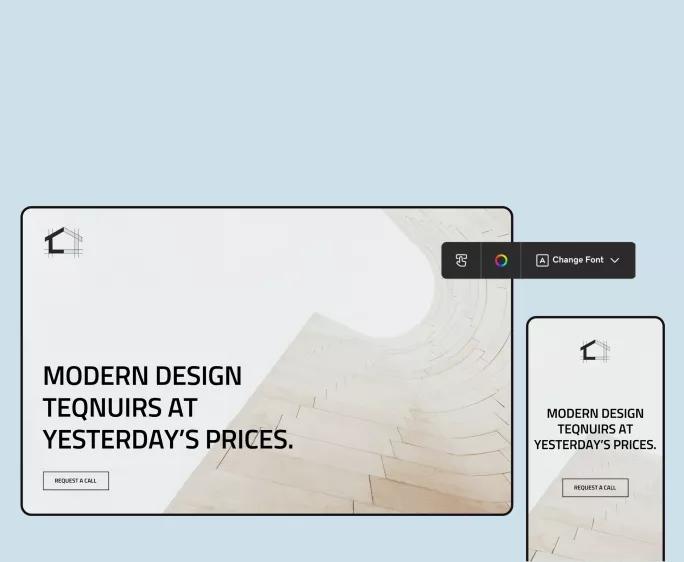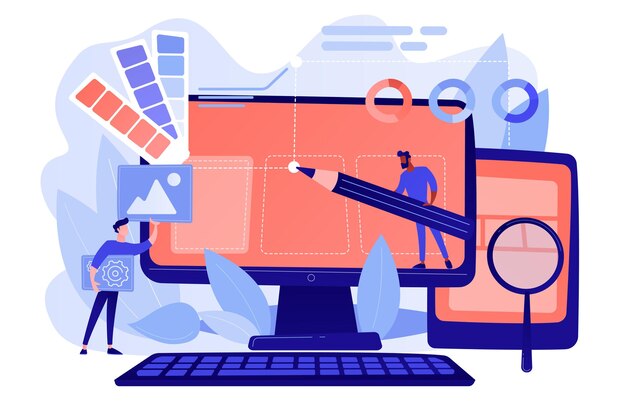Discover the Various Kinds of Website Design Provider for Your One-of-a-kind Demands
From receptive web style that adapts to different tools, to shopping internet design that drives on the internet sales, to customer experience (UX) design that enhances client satisfaction, to custom-made internet design that brings your vision to life-- the possibilities are limitless. Whether you're a tiny business owner looking to develop an online presence or an entrepreneur intending to change the mobile application world, this discussion will drop light on the various kinds of internet layout solutions available, helping you make an educated choice that straightens with your objectives.
Responsive Internet Layout
Receptive web design is an essential aspect of modern web advancement that makes sure internet sites adjust and present flawlessly throughout different gadgets and screen dimensions. With the enhancing use smart devices, tablet computers, and various other smart phones, it has actually come to be crucial for internet sites to be straightforward and obtainable on any kind of display.
Responsive website design uses a mix of flexible grids, layouts, photos, and CSS media questions to accomplish this versatility. It allows the website to instantly readjust its format and material based on the device's screen size, alignment, and resolution (website design company). This implies that customers can access the web site on their desktop computers, laptops, tablet computers, or smart devices without experiencing any concerns or having to zoom in or bent on see the content effectively

Shopping Web Layout

With the boosting need for online buying, organizations are currently concentrating on shopping website design to produce visually attractive and straightforward internet sites that drive sales and enhance the client buying experience. Shopping web design encompasses different elements such as format, navigating, item display screen, and check out process optimization. These elements are essential for drawing in and maintaining consumers, as well as increasing conversion rates.
An effective e-commerce website design starts with a well-organized layout that allows users to easily find the services or items they are seeking. Instinctive and clear navigation food selections, search bars, and filtering system choices are necessary for a smooth browsing experience. Additionally, the item display screen must display high-grade photos, thorough summaries, and client reviews to build trust fund and self-confidence in the product.
Additionally, the checkout procedure must be enhanced for simplicity and ease. A protected and structured settlement entrance, along with numerous repayment options, ensures a smooth purchase for the client. Additionally, including functions such as visitor checkout, order tracking, and customized recommendations can boost the general shopping experience.
Customer Experience (UX) Design
User Experience (UX) Design plays a critical function in producing engaging and straightforward websites that focus on the demands and choices of the target audience. It entails creating and improving the total experience that individuals have when communicating with a website or application. UX designers intend to enhance user contentment by enhancing the use, availability, and efficiency of the web site.

UX developers focus on producing user-friendly navigating, clear and succinct content, and visually attractive user interfaces. They make certain that the website is easy to browse and recognize, ensuring a seamless and pleasurable individual experience.
Along with boosting use, UX design also considers the emotional aspect of user experience. Designers aim to evoke favorable feelings via aesthetic components, such as shades, typography, and images, which add to the general individual fulfillment.
Custom-made Internet Style
Customized web design involves developing unique and custom-made web sites that are specifically created to satisfy the individual needs and requirements of a company or organization. Unlike pre-designed design templates or generic web site styles, personalized internet style provides a personalized approach that mirrors the brand name identity, worths, and objectives of the client.
With custom website design, every aspect of the internet site is meticulously crafted to straighten with the client's objectives. This consists of the design, shade plan, typography, images, and total individual experience. The design procedure begins with a thorough understanding of the customer's company and target audience, enabling the web developer to develop an internet site that successfully communicates the customer's message and engages individuals.
One of the crucial advantages of personalized web layout is its versatility. As the internet site is built from the ground up, the web developer has full control over its performance and attributes. This allows the assimilation of any type of wanted customizations, such as ecommerce functionality, material monitoring systems, or interactive elements.
Furthermore, custom website design ensures that the site is maximized for search engines, making it a lot more noticeable to potential clients. By carrying out search engine optimization best methods, such as correct keyword positioning and meta tags, the site can accomplish greater positions in search engine results.
Mobile App Style
Mobile application layout involves creating aesthetically appealing and user-friendly interfaces for applications that are particularly created for smart phones. With the raising appeal of tablets and smartphones, mobile app design has become an important element of digital product advancement.

Aesthetic charm is likewise vital in mobile application layout. The usage of colors, typography, and images can develop an aesthetically pleasing user interface that catches the individual's interest and enhances their total experience. Additionally, integrating brand name elements and keeping uniformity with the organization's aesthetic identification can help develop a strong brand visibility within the app.
Mobile application style also entails taking into consideration different technological elements, such as tool efficiency, compatibility, and responsiveness optimization - web design services. It is vital to make sure that the application functions effortlessly across various devices and operating systems, giving a constant experience to all individuals
Verdict
Receptive internet layout ensures a seamless experience across different devices, while e-commerce web style concentrates on producing online shopping platforms. Customized web style provides tailored services to meet particular demands, while mobile application design concentrates on developing straightforward mobile applications.
From receptive internet style that adapts to different tools, to shopping internet layout that drives on-line sales, to individual experience (UX) style that enhances customer satisfaction, to custom internet style that brings your vision to life-- the possibilities are endless.A reliable shopping web design starts with a well-organized format that browse around these guys enables users to conveniently discover the solutions or products they are looking for. The layout procedure begins with a view publisher site comprehensive understanding of the client's organization and target audience, permitting the web designer to create a site that effectively connects the client's message and involves individuals.
Responsive internet design makes certain a seamless experience throughout different gadgets, while shopping web design focuses on creating on the internet shopping systems. Custom internet design uses tailored options to meet certain needs, while mobile application design focuses on developing straightforward mobile applications.